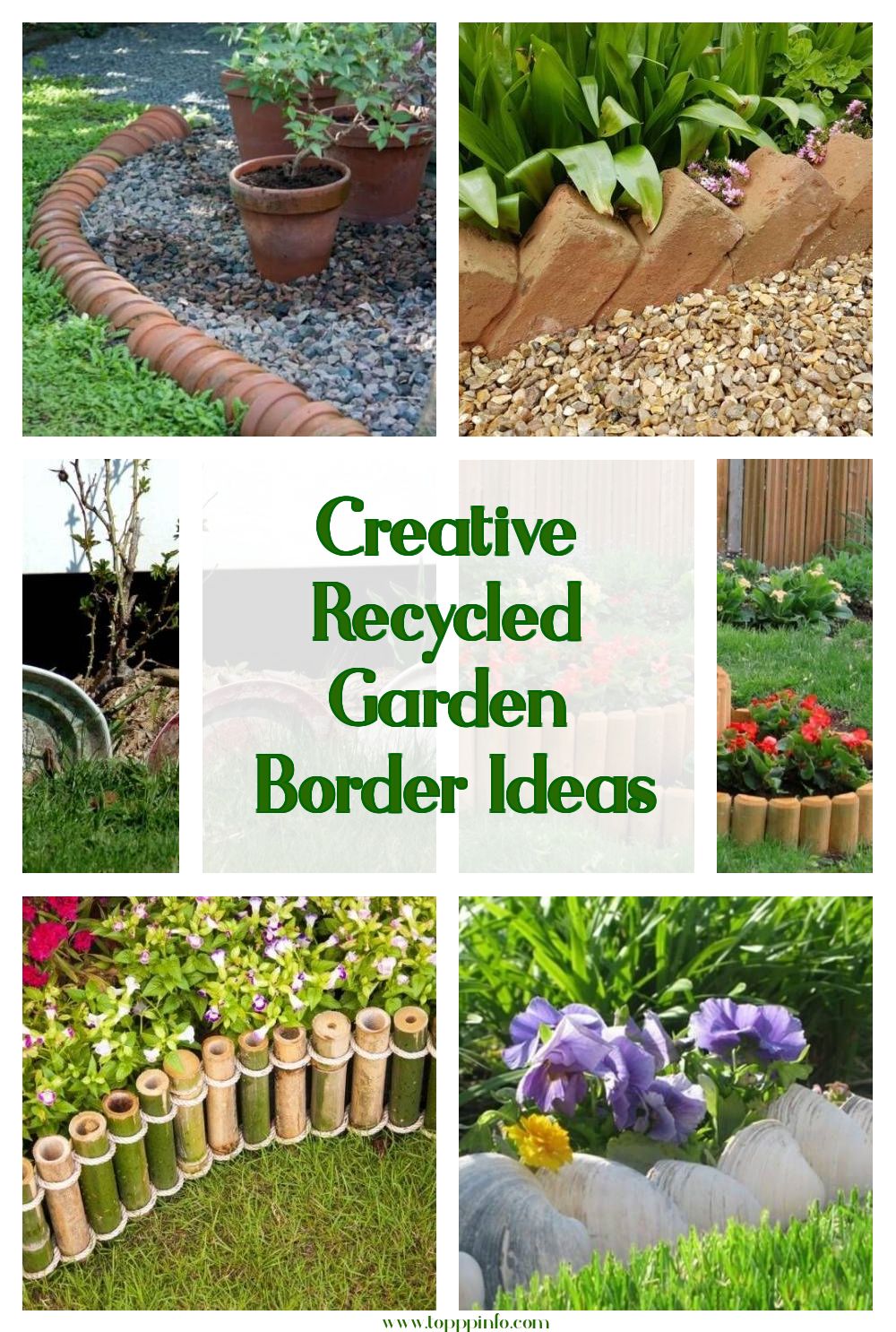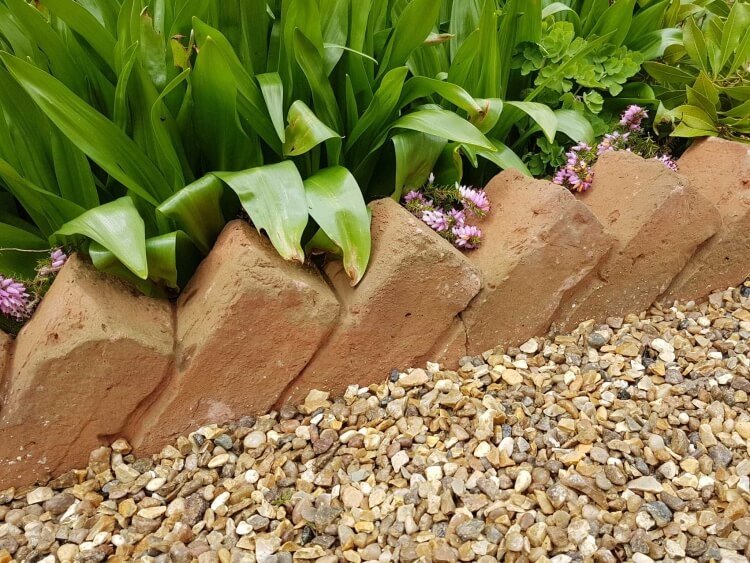Recycled garden border: creative ideas to personalize your paths and flower beds
Delineating your flower beds with borders gives them structure, accentuates the different garden sections, and creates a landscape aesthetic. The driveway edges also help prevent the lawnmower from damaging your favorite plants. They are also useful for separating flowers from trees and the vegetable patch or providing a picturesque transition between a patio and a lawn. For this purpose, you can use one or more different materials. Find some reclaimed garden edging ideas to copy to perfect your landscaping below.
Give your yard a more polished look with these reclaimed garden edging ideas.
Whether you grow fruits and vegetables or aromatic herbs and flowers, borders are the finishing touch to any garden. By placing edges around flower beds filled with annual flowers and perennials, they will look neater, and your mulch will stay in place. In addition, it will add character and charm to your decor. For the best effect, look for borders that complement the style of your home. For example, a building of classical architecture goes better with traditional materials such as brick or stone—a more modern construction pairs well with the clean lines of a metal edging.
Reclaimed garden edging with bricks
Make the world a better place by recycling old material into a reclaimed garden border. Bricks give a rustic touch, and an English country feels to the courtyard. The simplest idea for a brick flowerbed edge is to place them side by side around the area to be separated. We also suggest that you dig holes and layout your bricks there, then backfill with soil. It’s a great way to showcase your plantings and draw the eye directly to your flowers.
Original stone garden border
Yes, we have all seen stones and boulders as an occasional garden or landscape border. It really works, but it may sound old-fashioned. Instead of just lining them up, modernize the look of your flower beds by digging a trench and then filling it with rocks or river pebbles of a similar size. This will give you a good barrier to weeds.
Moreover, this type of installation always involves combining two types of stones, preferably gray or white, to contrast with the flowers of vibrant colors.
Collect tons of polished stones, line them up in a thick row to give your garden or driveway a simple but unique border. You can also use multi-colored stones.
Metal garden edging
Among gardeners’ favorite salvage materials are metals. They blend in well with the natural state of the garden and, at the same time, look more modern. You can use objects that can be partially buried in the ground, such as sections of steel pipe or copper plates, for example. Besides being very inexpensive, metal garden edging can last for years if properly maintained.
Reclaimed wood garden edging.
Nothing is more timeless than wood. It is still an easy-to-use material for garden edging as You can easily recycle it from old fences, pallets, or other construction waste. It can also be easily cut at home, allowing you to customize your front house flower beds and garden paths. Use the wood to cut out sections, paint some of them at random (for a “vintage” effect) with leftover paint and leave some unfinished, then dig a trench to lay them down and form a border of the unique reclaimed garden.
Creative ideas for reclaimed garden edging with glass
Here’s a great way to recycle glass dishes, mugs, or even bottles. Break the dishes into pieces and scatter them in a trench as you would with small decorative stones. To do this, place a few dishes at a time in an old pillowcase to protect yourself from shards of glass, wear eye protection, and use your hammer. The size of the coins you want is up to you. Also, keep in mind that larger pieces will give you more texture and color.
Finally, you can also use whole bottles of wine. This idea is ideal for areas where there is little traffic from machinery such as mowers. You can bury the neck of the bottles so that the bottom acts as a border. You can vary the height of each bottle or keep it uniform. Choose to use one-color copies or mix them up.
You can easily define small spaces with old terracotta pots
Chipped plates separate the lawn from the flower beds
Seashell border to invite the breeze into your garden










